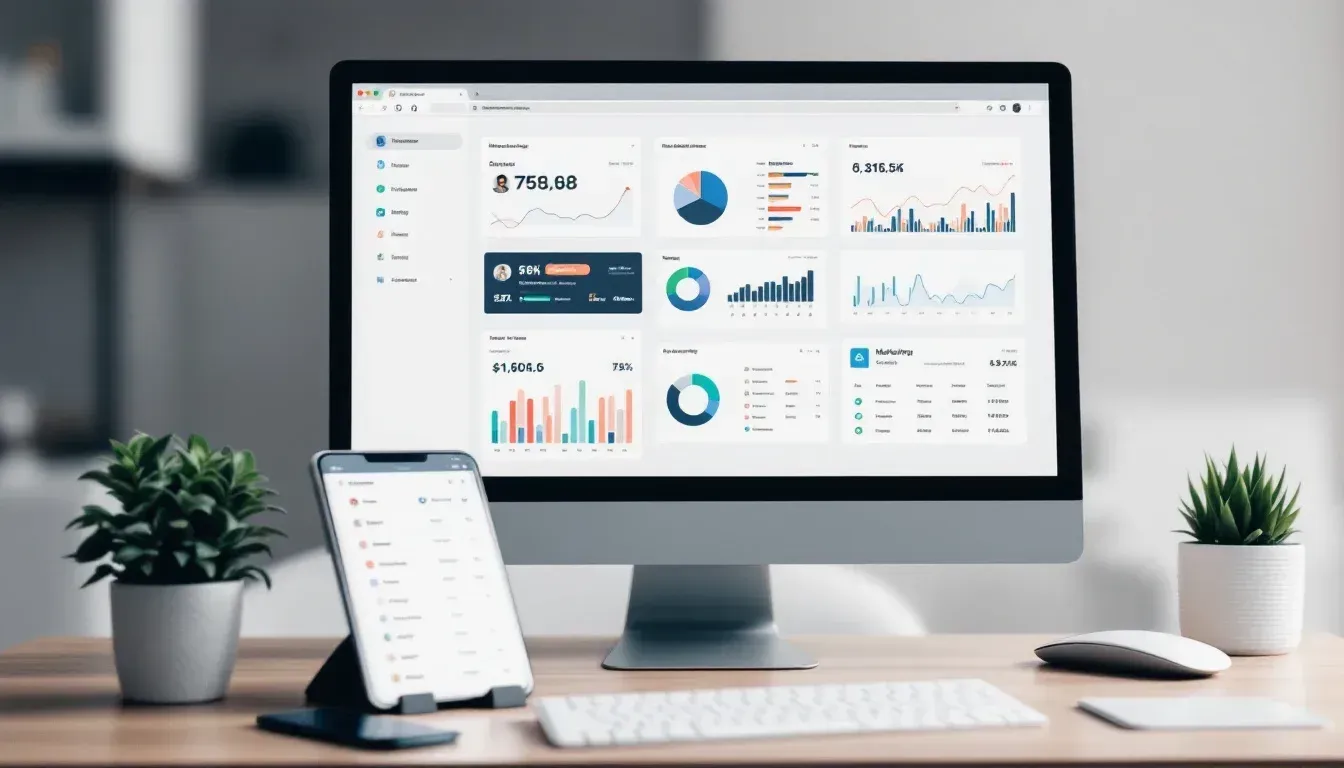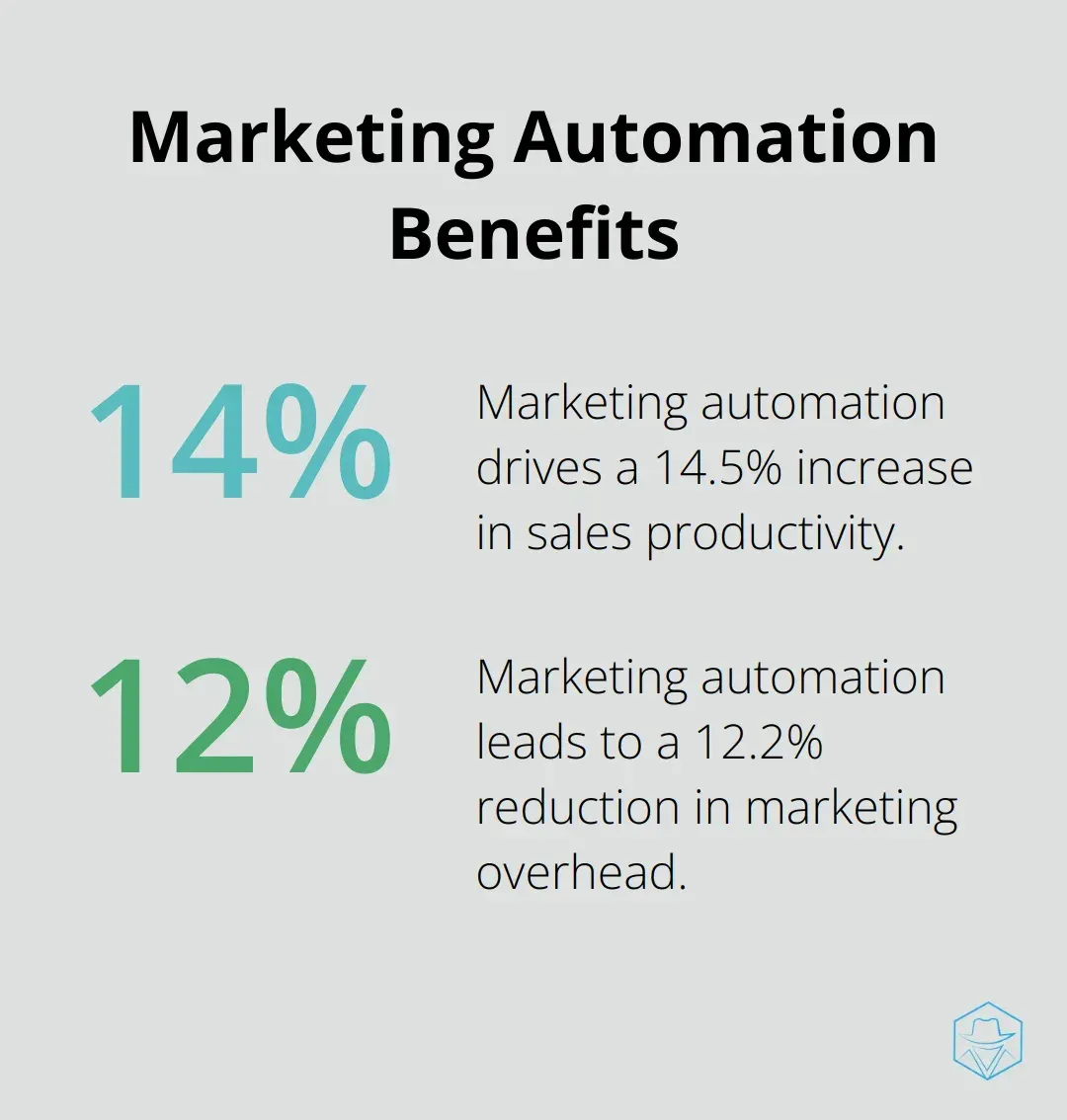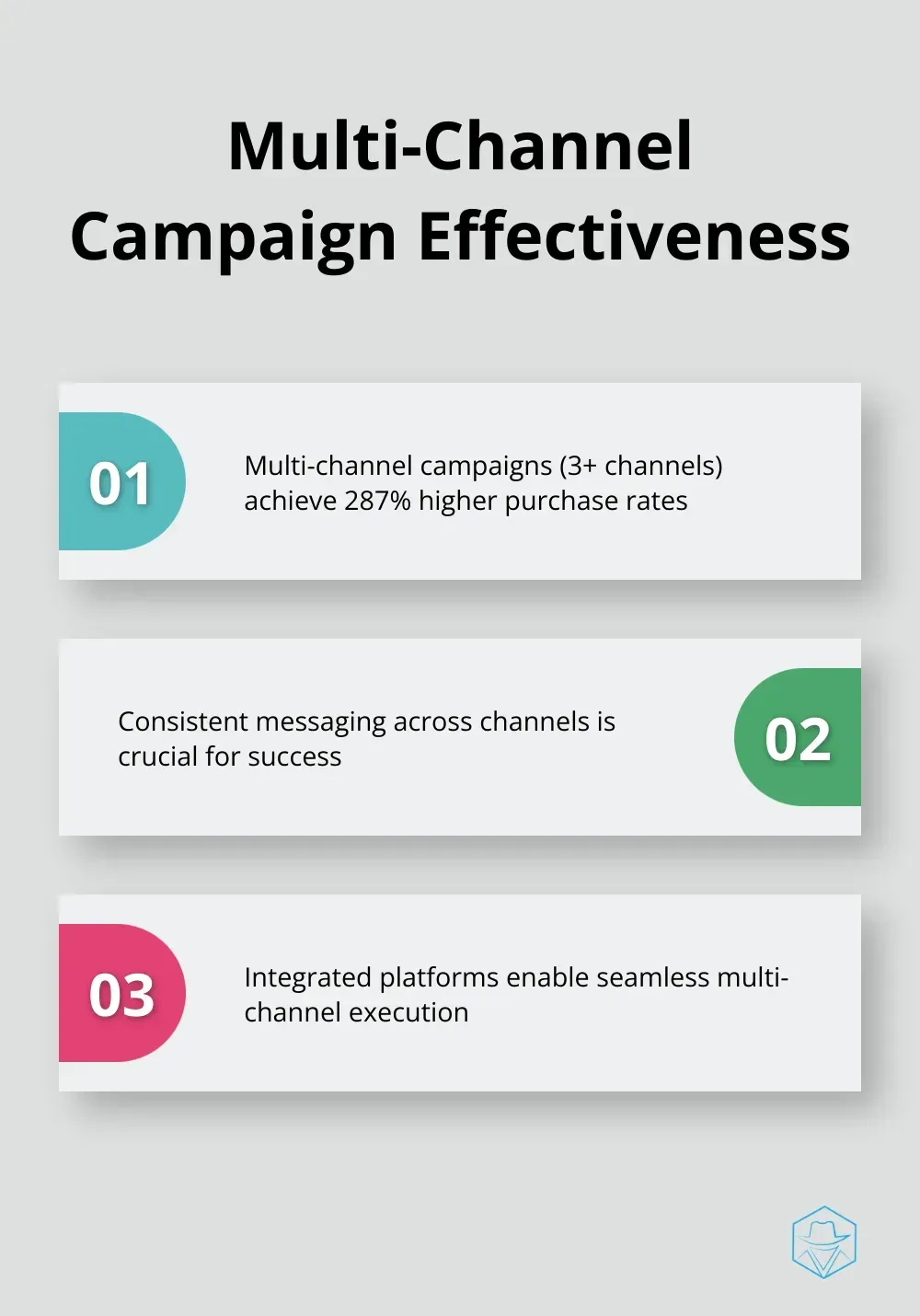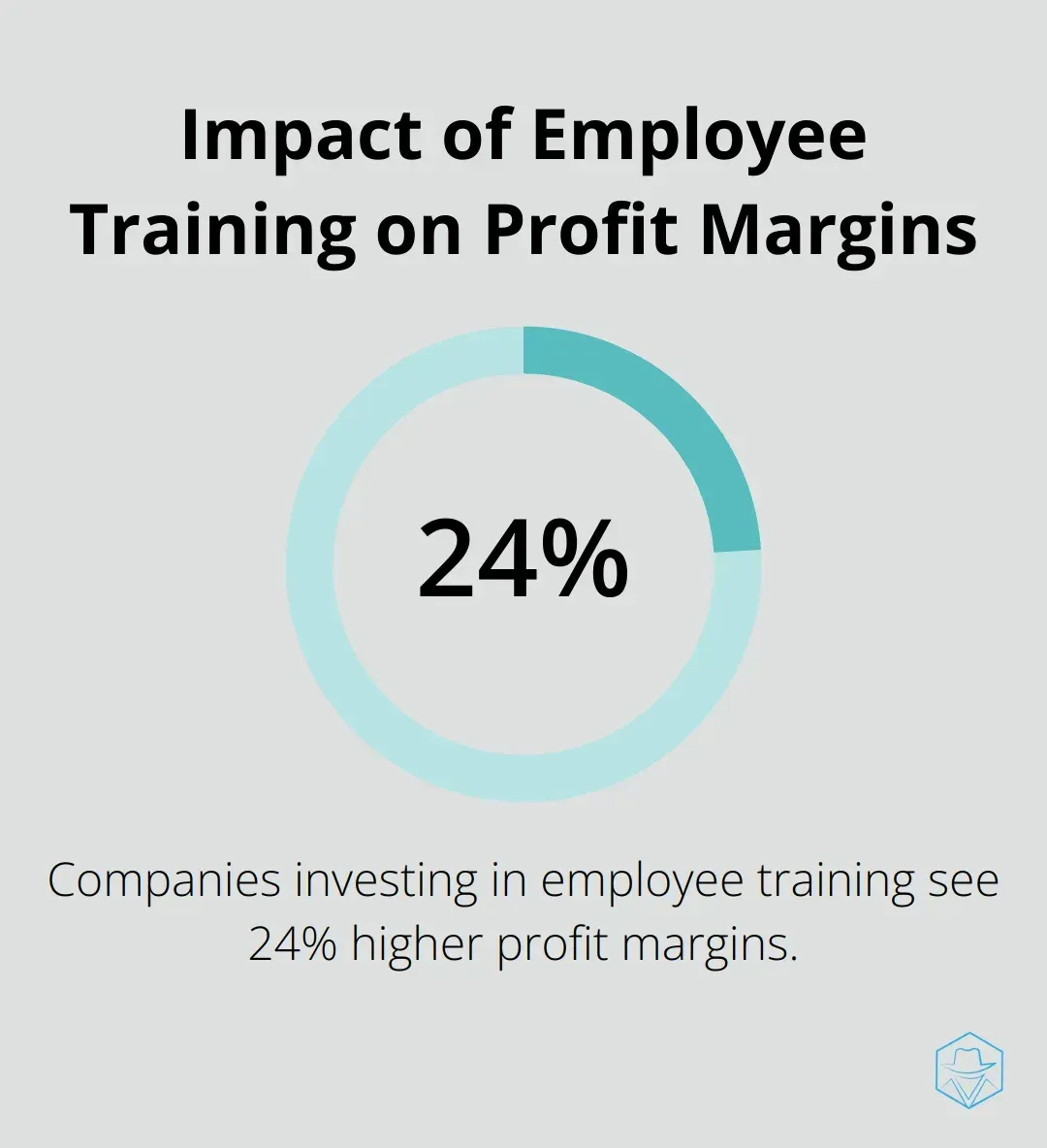Integrated Marketing Automation: Streamline Your Efforts

At Drop Cowboy, we’ve seen firsthand how integrated marketing automation can transform businesses. This powerful approach combines various marketing tools and strategies into a single, cohesive system.
Integrated marketing automation streamlines workflows, enhances customer experiences, and boosts overall marketing effectiveness. In this post, we’ll explore its key features, implementation strategies, and the game-changing benefits it offers to companies of all sizes.
What Is Integrated Marketing Automation?
The Core of Integrated Marketing Automation
Integrated marketing automation unifies various marketing tools and strategies into one cohesive system. This approach allows companies to automate repetitive tasks, personalize customer interactions, and make data-driven decisions across multiple channels. It’s a game-changer for businesses looking to streamline their marketing efforts.
Key Components of the System
The backbone of any integrated marketing automation system includes:
- Customer Relationship Management (CRM) software
- Email marketing tools
- Social media management platforms
- Analytics dashboards
These components work together to create a seamless marketing ecosystem. For example, when a lead interacts with an email campaign, this information can automatically update their profile in the CRM, trigger a follow-up action on social media, and provide insights through analytics.
Measurable Benefits for Businesses
Companies of all sizes can reap significant rewards from integrated marketing automation. A study by Nucleus Research found that marketing automation drives a 14.5% increase in sales productivity and a 12.2% reduction in marketing overhead. Small businesses can compete more effectively with larger competitors, while enterprises can scale their marketing efforts without proportionally increasing costs.

The Shift from Traditional Marketing
Integrated marketing automation creates a unified view of the customer journey, unlike traditional marketing approaches that often operate in silos. This holistic approach enables marketers to deliver consistent messaging across all touchpoints. A report by Salesforce revealed that 76% of consumers expect consistent interactions across departments, yet 54% say it generally feels like sales, service, and marketing don’t share information.
Personalization at Scale
One of the most powerful aspects of integrated marketing automation is its ability to deliver personalized experiences at scale. McKinsey reports that personalization can deliver five to eight times the ROI on marketing spend and lift sales by 10% or more. With automation, businesses can tailor content, product recommendations, and offers based on individual customer behaviors and preferences across multiple channels simultaneously.
Data-Driven Decision Making
Integrated marketing automation platforms provide real-time data and analytics, allowing marketers to make informed decisions quickly. This data-centric approach helps identify which campaigns are most effective, which channels drive the highest ROI, and where there’s room for improvement. A survey by Ascend2 found that 64% of marketing professionals say improving data quality is the most challenging obstacle to marketing automation success.
As we move forward, it’s essential to understand the key features that make effective marketing automation platforms stand out. These features not only enhance the capabilities of integrated marketing automation but also provide the foundation for successful implementation and execution of marketing strategies.
What Makes a Marketing Automation Platform Effective?
Unified Customer Data Management
The cornerstone of any powerful marketing automation platform is its ability to centralize customer data. This feature pulls information from various touchpoints (website interactions, email engagement, social media activity, and purchase history) into a single, comprehensive view of each customer.
A study by Forrester highlights the impact of this approach: companies that excel at lead nurturing generate 50% more sales-ready leads at 33% lower cost. This level of success stems from a unified data approach that allows for accurate tracking and segmentation of leads throughout their journey.
Seamless Multi-Channel Campaign Execution
Top-tier platforms enable marketers to orchestrate campaigns across multiple channels from a single interface. This capability isn’t just about convenience; it’s about maintaining consistency and leveraging cross-channel synergies.
Omnisend’s report reveals that marketing campaigns using three or more channels earned a 287% higher purchase rate than single-channel campaigns. The best platforms make it easy to create, schedule, and automate campaigns across email, SMS, social media, and other channels, ensuring a cohesive customer experience.

Advanced Personalization Capabilities
Generic messaging no longer suffices in today’s market. Effective marketing automation platforms offer sophisticated personalization features that go beyond simple name insertion. They leverage AI and machine learning to analyze customer behavior and preferences, enabling hyper-targeted content delivery.
Epsilon research indicates that 80% of consumers are more likely to make a purchase when brands offer personalized experiences. The most powerful platforms allow for dynamic content insertion, product recommendations, and behavior-triggered messaging that feels tailored to each individual recipient.
Robust Analytics and Reporting
A standout feature of effective marketing automation platforms is their ability to provide comprehensive analytics and reporting. These tools offer real-time insights into campaign performance, customer behavior, and ROI. Marketers can use this data to make informed decisions and continuously optimize their strategies.
Scalability and Integration
The best marketing automation platforms grow with your business. They offer scalable solutions that can handle increasing volumes of data and campaigns as your company expands. Moreover, they integrate seamlessly with other tools in your tech stack (CRM systems, e-commerce platforms, etc.), creating a cohesive ecosystem for your marketing efforts.
While many platforms offer these features, it’s crucial to choose one that aligns with your specific business needs and goals. For instance, Drop Cowboy excels in voice and SMS automation, which can significantly boost engagement rates. The right marketing automation platform should feel like a natural extension of your marketing team, amplifying your efforts and providing clear, actionable insights to continually refine your strategies.
Now that we’ve explored the key features of effective marketing automation platforms, let’s examine how to successfully implement these tools in your business.
How to Implement Integrated Marketing Automation
Assess Your Current Marketing Landscape
Before you automate, take stock of your existing marketing processes. Identify repetitive and time-consuming tasks. A study by Smartsheet reveals that marketing teams dedicate an average of 16 hours per week to routine tasks that could be automated. This assessment will highlight areas where automation can make the most significant impact.
Evaluate your customer data next. Is it scattered across different platforms? Do your customer profiles have gaps? A survey by Experian indicates that 89% of companies face challenges with data quality. Address these issues before implementation to ensure the success of your automation efforts.
Select the Right Automation Platform
The choice of platform is critical. Consider factors like scalability, integration capabilities, and specific features that align with your marketing goals. If SMS marketing is a priority, a platform with strong SMS capabilities (like Drop Cowboy) would be ideal.
Look beyond current needs and think about future growth. Gartner predicts that by 2025, 60% of B2B sales organizations will transition from experience- and intuition-based selling to data-driven selling. Ensure your chosen platform can support this evolution.
Create a Phased Implementation Plan
Resist the urge to automate everything at once. Start with a pilot project that focuses on one or two key processes. This approach allows you to learn and adjust without overwhelming your team or risking major disruptions.
Set clear, measurable goals for each phase. Try to increase email open rates by 15% or reduce lead response time by 30%. These concrete objectives will help you track progress and demonstrate ROI to stakeholders.
Prioritize Team Training and Adoption
The success of your automation efforts depends on your team’s ability to use the new tools effectively. Invest in comprehensive training programs. A report by the Training Industry shows that companies investing in employee training see 24% higher profit margins.

Create a culture of continuous learning. Encourage team members to share insights and best practices. Consider appointing automation champions within your team to support ongoing adoption and optimization.
Monitor and Refine Your Automation Strategy
Implementing integrated marketing automation requires ongoing refinement and optimization. Review your automation workflows regularly, analyze performance data, and make adjustments as your business evolves and market conditions change.
Use A/B testing to optimize your automated campaigns. Test different elements (subject lines, content, send times) to improve performance. According to a study by Litmus, companies that always include A/B tests in their emails generate an ROI of 48:1, compared to 35:1 for those who never do.
Final Thoughts
Integrated marketing automation revolutionizes business marketing strategies. It unifies tools and processes, streamlines efforts, and delivers personalized experiences at scale. Companies that implement this approach will increase efficiency, improve customer engagement, and boost ROI significantly.
The future of marketing automation will incorporate more AI, machine learning, and immersive technologies. These advancements will enable sophisticated predictive analytics, hyper-personalization, and innovative customer interactions. Businesses must adapt to these changes to remain competitive in the evolving digital landscape.
Drop Cowboy stands out as a powerful solution for integrated marketing automation. Its features (including Mimic AI™ for voice cloning and Smart Delivery™ for global message distribution) enhance marketing efforts through ringless voicemail and SMS campaigns. Companies that leverage such tools will create meaningful connections with their audience and achieve sustainable growth in the digital age.
blog-dropcowboy-com
Related posts

June 27, 2025
Best Vonage Alternatives for Business Communication
Explore top alternative to Vonage for business communication with effective features, pricing, and benefits that suit your company’s needs.

July 20, 2025
Is Twilio Ringless Voicemail Right for Your Business?
Explore if Twilio ringless voicemail fits your business needs. Understand its benefits and drawbacks to make an informed decision.

March 1, 2025
Text Marketing Examples That Drive Results
Explore text marketing examples that boost engagement and deliver results with proven strategies for increasing conversions effectively.

March 19, 2025
How to Choose the Best CRM for Marketing Automation
Find the right CRM for marketing automation and boost your business efficiency with these practical tips and tools. Learn how to make an informed choice.

May 8, 2025
Marketing Automation for Real Estate: Boost Sales
Boost real estate sales by exploring top marketing automation techniques. Discover the best marketing automation certification for growth.

May 6, 2025
HubSpot or Monday: Which Project Management Tool?
Compare HubSpot vs Monday for your project management needs. Discover features, ease of use, integration, pricing, and find your perfect tool.